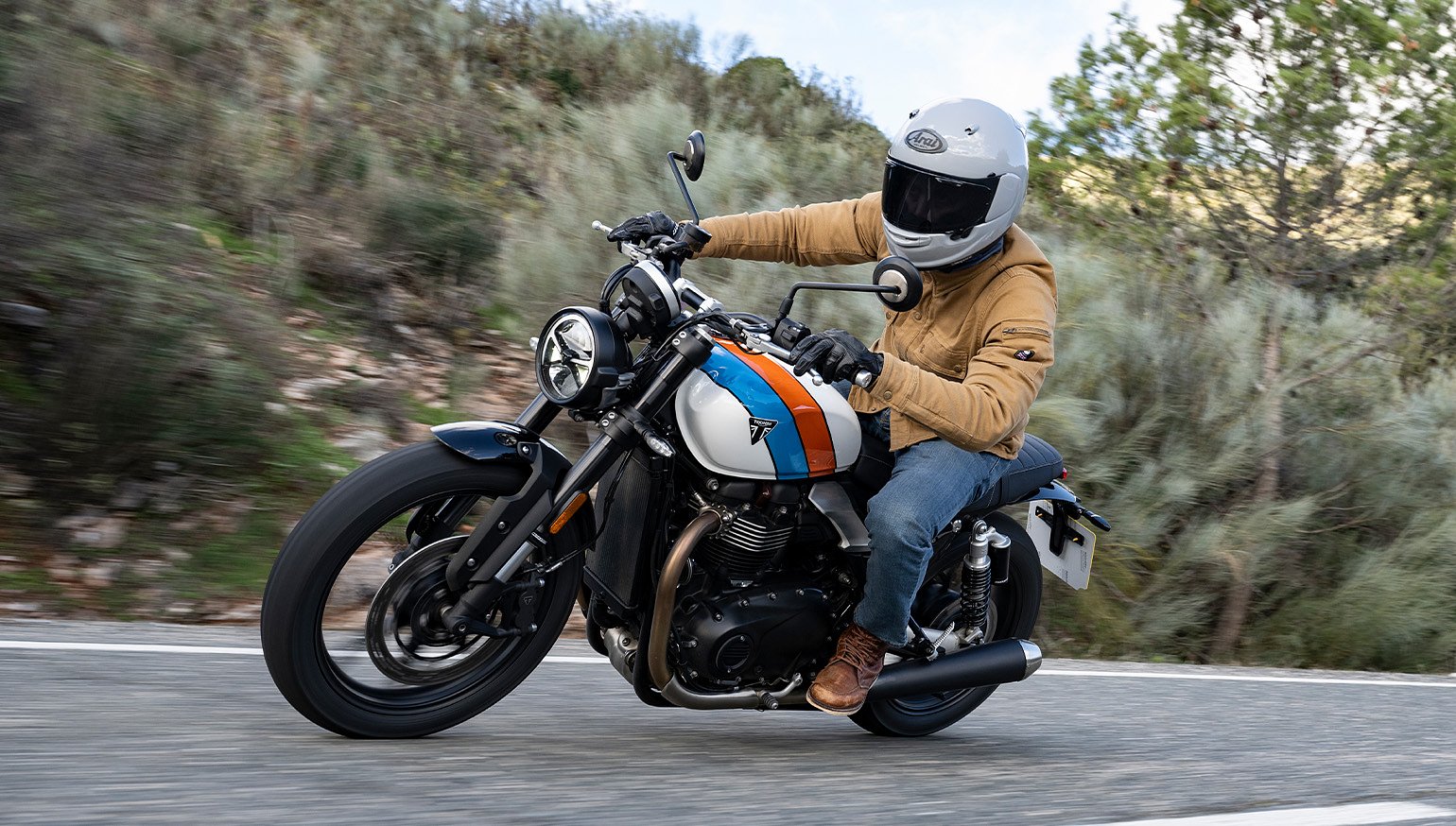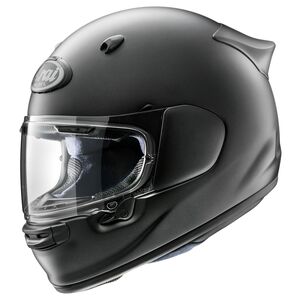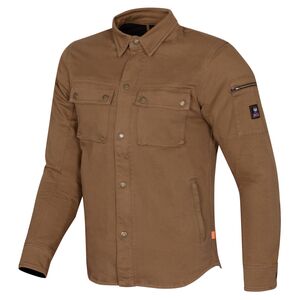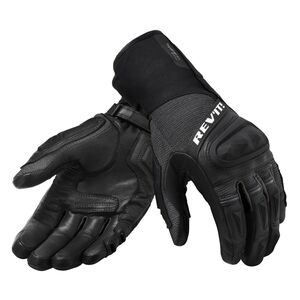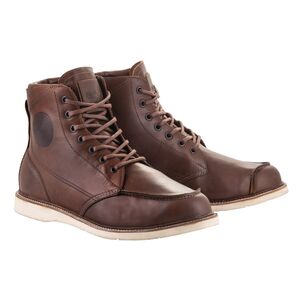Steam rises from mugs of café con leche. Plates of sugared pastries clutter the plastic outdoor tables. In the distance, the bell tower of Castillo del Águila (Eagle’s Castle) overlooks the pueblo blanco of Gaucín. Its whitewashed buildings and orange tiled roofs serve as the perfect backdrop for the Speed Twin 900.
“What you see is what you get with this bike,” admits a Triumph representative.
It’s a refreshingly honest take, free from the hyperbole and propaganda so often found in press releases and product presentations. In 900 trim, the Speed Twin is ostensibly a gas tank, an engine, and a set of wheels. In reality, there’s slightly more beneath the surface. That’s especially so in 2025.
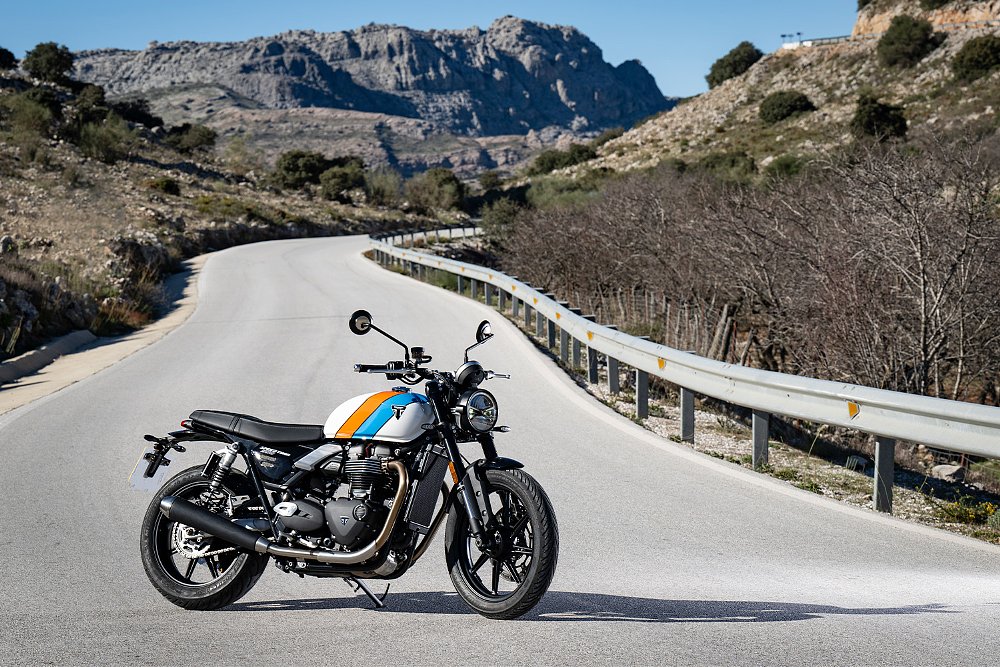
In plain English
The Speed Twin 900 started life as the Street Twin in 2016. The spartan standard originally functioned as the entry point to Triumph’s popular Modern Classic lineup. Its reverse cone mufflers, cast wheels, and sporty (for a Bonneville) paint schemes also added a dash of modern flavor to the basic Bonnie recipe. In 2023, the retro roadster dropped the “Street” from its name, joining the new Speed Twin family as the Speed Twin 900.
It was mostly a rebranding exercise, as the model remained mechanically identical to its predecessor. Hinckley saved those Speed-worthy updates for 2025. A shapelier tank, slimmer engine cases, sleeker side panels, and reshaped seat are all part of that stylish makeover. Even the fenders, fork protectors, footpegs, and filler cap underwent fresh redesigns.
In the words of Triumph Chief Engineer Stuart Wood, the Speed Twin is now “slightly italicized, it’s leaning forward, it’s on its toes.” Matching that sporty stance is a Marzocchi inverted fork and Marzocchi rear shocks, complete with piggyback reservoirs and preload adjustability. The wheels are 3.5 ounces lighter. The aluminum swingarm is stiffer (than the previous steel unit). The front brake disc is larger (320 mm). Muy deportiva.
What truly distinguishes the current-gen Speed Twin is its underlying technology. It has LED lighting from tip to tail. Its dash is an LED/TFT combo. It even boasts a USB-C charging port. However, the model’s most advanced tech goes unseen. Equipped with an IMU, the Speed Twin novecientos now features lean-sensitive ABS and traction control. That might seem overkill for a 64-horsepower bike, but the truth was revealed on the roads of southern Spain.
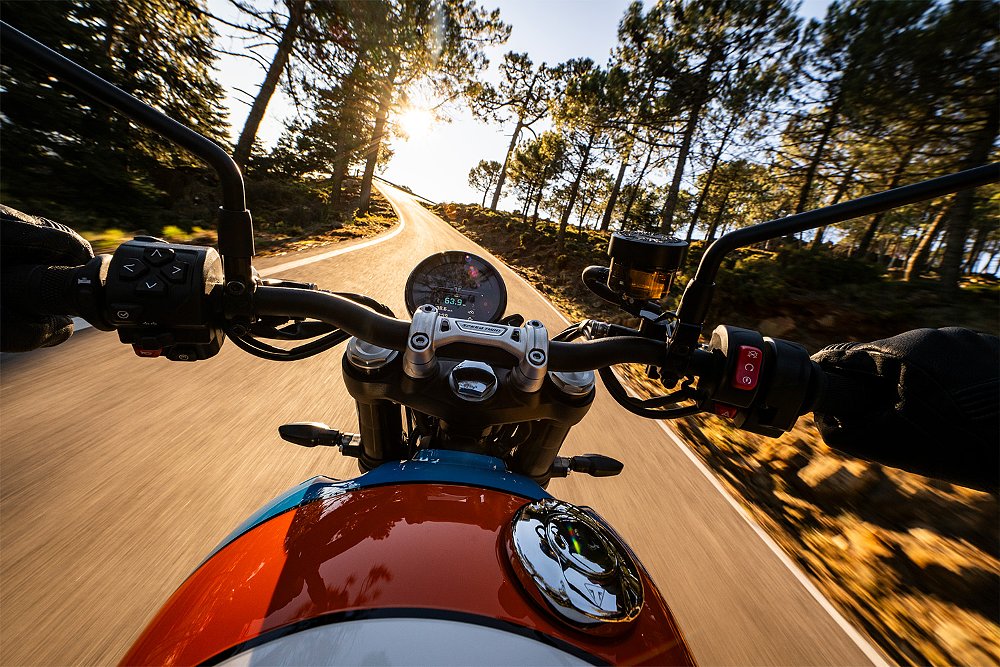
Andalusian horse(power)
While the Speed Twin underwent a significant glow-up, its 900 cc parallel-twin engine returns unchanged in 2025. Its ride modes remain just Rain and Road. Its 270-degree firing order still produces a lovely racket (with Euro 5+ compliance, no less). It even maintains a claimed 64 horses (at 7,500 rpm) and 59 foot-pounds of torque (at 3,800 rpm). Maybe most disappointing is that the five-speed transmission returns, as well.
I’m here to tell you that I didn't miss sixth gear all that much. Admittedly, first gear is quite short. I was relieved that the rest of the gearbox is well spaced. For instance, I often shifted out of first by 25 mph. I didn’t upshift from second gear until 60 mph. The gearbox’s versatility was even more evident on the dual carriageway (as the Brits call it).
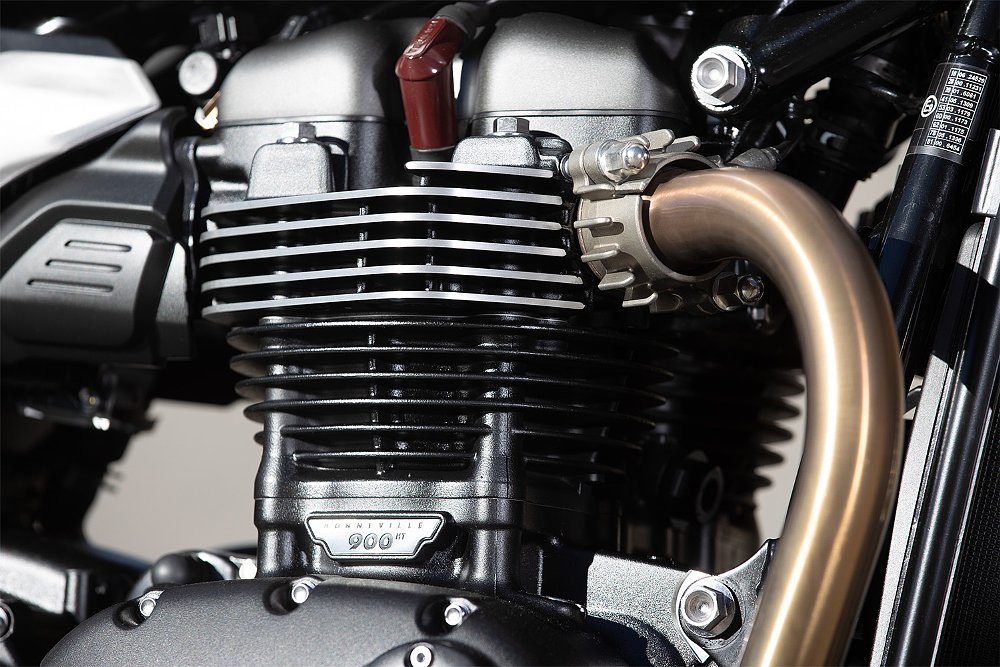
In fifth gear, the 900 drew less than 4,000 rpm at 70 mph. It was just as highway-capable two gears lower. At 80 mph in third gear, the tachometer never surpassed 6,000 rpm. That’s an important detail because engine vibrations were nearly negligible under that mark. Press beyond 6,000 rpm and a buzz radiates through the footpegs, tank, and bars. That discouraged me from exploring the upper reaches of the rev range. So too did the p-twin's meaty mid-range.
Peak torque arrives at just 3,800 rpm. That's when the mill is most responsive, but as good things go, it doesn't last long. That's to say the Speed Twin lacks both bottom-end grunt and top-end power. It doesn't reach peak power until 7,500 rpm. Worse yet, spooling the engine up to those heights is an exercise in patience. Let the revs fall below 3,000 rpm and Speed takes just as long to regain momentum. As such, I often kept the bar-style tach blipping between 4,000 and 6,000 rpm.
That narrow operating zone presented its own challenges through the switchbacks and hairpins, where I couldn’t rely on low-down torque to offset any lazy footwork. The same was true on the straights, where overtaking slower-moving traffic required prompt and frequent upshifts.
As the entry-level Bonneville, the Speed Twin 900 is supposed to be exciting and accessible. It’s tasked with welcoming riders while also giving them room to grow. The twin powerplant — five gears and all — achieves those ends. It packs enough punch to thrill, but not enough to spill. More than most other Bonnevilles, the Speed Twin straddles that space between Modern Classic. That quality is only matched by the model’s chassis.
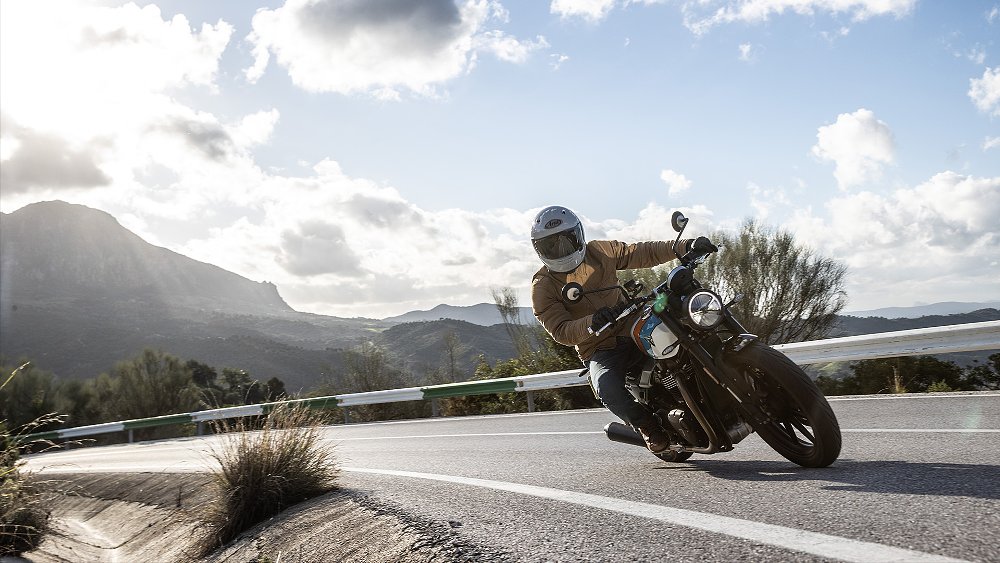
Coming around the mountain
You may have to muscle the 476-pound Speed Twin around the garage, but it requires little assistance when tipping into a corner. Steering is as light as it is steady. It’s neither the nimblest nor the most accurate option in Triumph’s portfolio, but it's certainly one of its sportier Bonnies. That’s due, primarily, to the 900’s balanced package. Its stopping power is commensurate to its horsepower. Whether on the brakes or on the gas, load transfer rarely overwhelms the USD fork and piggyback shocks.
The only limiting factor is the model’s Michelin Road Classic tires, which yield nominal feedback and feel. Gauging grip often left a big question mark hovering over my head, especially as lean angles increased. In such situations, I often suggest swapping for stickier rubber, but that’s no easy feat with the Twin’s 18-inch front wheel. Most tires available in that size offer comparable performance to the stock Michelins.
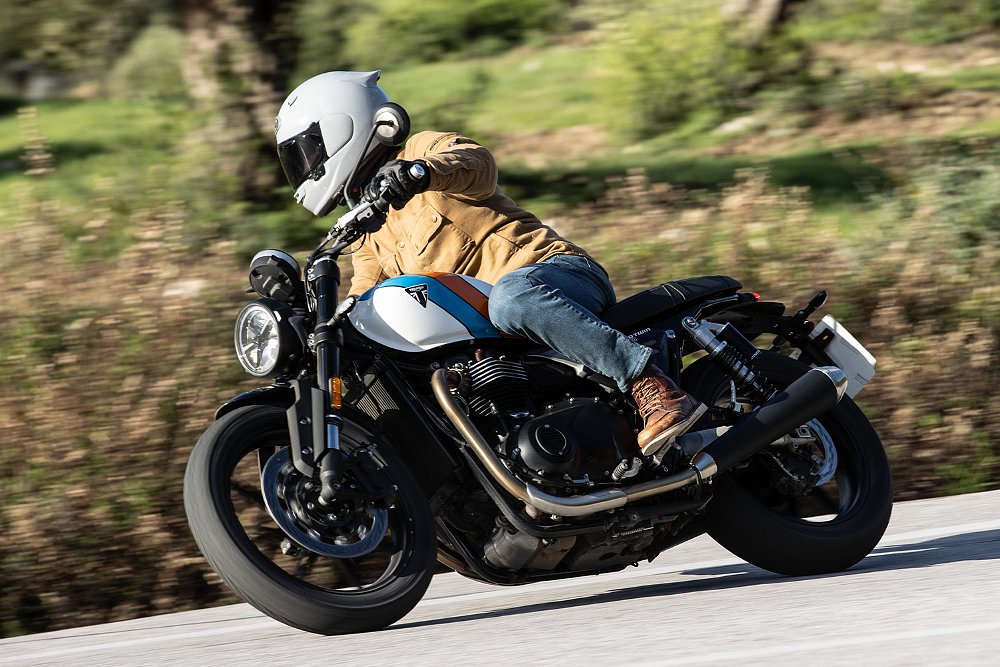
Still, the Speed Twin 900 held its own when the pace picked up. It won’t set any TT lap records, but it's worth a few giggles, nonetheless. More importantly, the 900 remained a steady and composed companion the whole day through. Even when engaging the front ABS into a downhill braking zone, I never questioned whether I’d make the turn. The Michelins rank low on the traction scale but I never activated traction control. At least, not until we moseyed into the city.
Better to have and not need
During our pre-ride briefing, Triumph reps adamantly defended the Speed Twin’s IMU-based rider aids. The skeptic in me silently doubted those claims. Several of my colleagues shared the same sentiments. That all changed after riding through the streets of Estepona.
I first tripped the traction control when accelerating through a right-hand turn. After struggling through traffic, I was anxious to catch up with the group. A tire at lean, thickly painted cross-walk lines, and a handful of throttle is never a good combination. The rear immediately kicked to the left. Before I could react, TC cut the power, allowing the rear to realign itself. I wasn’t the only one, either.
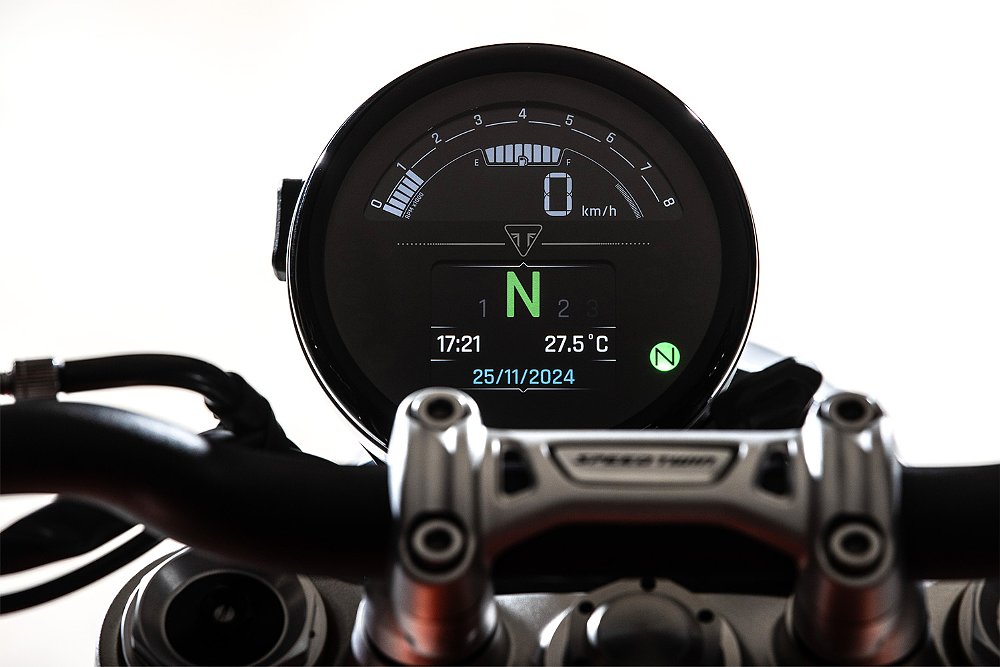
Just one roundabout ahead, several riders engaged their traction control after accelerating over a patch of spilled fuel (we surmised it was diesel, based on the smell). In both instances, no one went down, and TC had a lot to do with it. Had we never encountered those circumstances, we never would have needed TC. That’s the thing, though. We did.
As Mr. Wood presciently noted during the presentation, “It’s better to have and not need than to need and not have.” The Speed Twin’s performance may not demand lean-dependent traction control. Given the spec sheet, its value may not be evident. But, the Speed Twin’s invisible safety nets are there to protect you from the things you don’t see coming. I sure know I didn't.
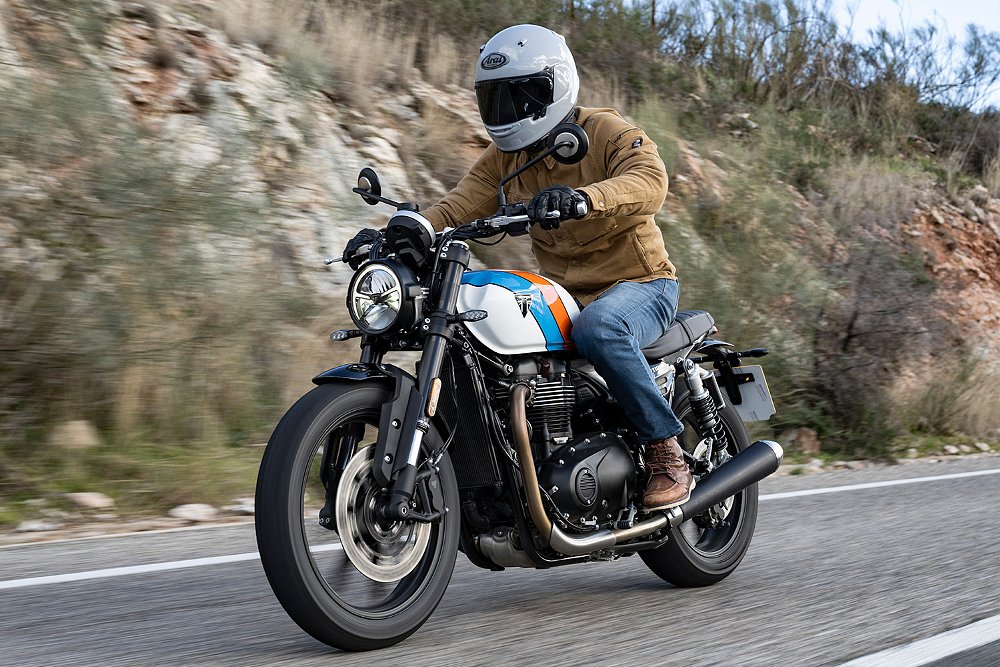
The beginner Bonneville
Even with the Speed 400 joining Triumph’s Modern Classic range, the brand still categorizes the Speed Twin 900 as an entry-level option. That mostly applies to new riders who prefer a larger motorcycle. It’s easy to see why, too. The model is torquey yet tractable. It's capable yet comfortable. It's familiar yet new. At $9,995, it’s also not cheap yet not expensive.
Yes, what you see is what you get with the Speed Twin 900, but you also get a little more this time around. The bike’s reworked chassis and updated styling immediately meet the eye, but the new tech doesn’t go unnoticed, either. That’s why, in 2025, the 900 finally feels like it found its spot in the Speed Twin family.
| 2025 Triumph Speed Twin 900 | |
|---|---|
| Price (MSRP) | $9,995 (base), $10,795 (as tested) |
| Engine | 900 cc, liquid-cooled, eight-valve, parallel twin |
|
Transmission, final drive |
Five-speed, chain |
| Claimed horsepower | 64 @ 7,500 rpm |
| Claimed torque | 59 foot-pounds @ 3,800 rpm |
| Frame | Steel tube double cradle |
| Front suspension | Marzocchi 43 mm inverted fork; 4.72 inches of travel |
| Rear suspension | Dual Marzocchi shocks, adjustable for spring preload; 4.57 inches of travel |
| Front brake | Single four-piston caliper, 320 mm disc with ABS |
| Rear brake | Nissin two-piston caliper, 255 mm disc with ABS |
| Rake, trail | 24.9 degrees, 4.1 inches |
| Wheelbase | 56.5 inches |
| Seat height | 30.7 inches |
| Fuel capacity | 3.2 gallons |
| Tires | Michelin Road Classic, 100/90R18 front, 150/70R17 rear |
| Claimed weight | 476 pounds |
| Available | February 2025 |
| Warranty | 24 months |
| More info | triumphmotorcycles.com |

 Membership
Membership

